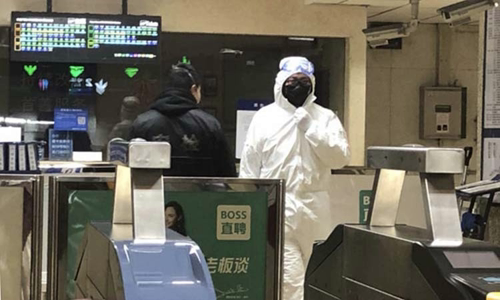China is renovating Tieu Suong Son Hospital in Beijing built during the SARS 2002-2003 pandemic.
Pneumonia caused by a new strain of the strain Corona (nCoV) started in Wuhan, the capital of Hubei province, which has left 106 people dead and more than 4,500 infected. The epidemic has now spread to Thailand, Japan, Korea, USA, Singapore, Nepal, France, Canada and Vietnam.

Security personnel wear protective gear at a subway station in Beijing on January 24 Photo: AP.
The Jiemian News portal cited several sources who said construction and medical workers had been sent to Xiaoyunshan Hospital in Beijing in the past few days. This is a hospital on the outskirts of Beijing, used to quarantine and treat patients with Acute Respiratory Syndrome (SARS) in 2003 and was converted into a treatment room in 2012.
Speaking at a press conference in Beijing today, Chinese National Health Committee (NHC) official Jiao Yahui said the lack of medical supplies was a major constraint by China in its efforts to contain the disease and treatment for infected people.
Jiao added that the government has added about 6,000 health workers to the epidemic center in Hubei, including Wuhan and seven other areas of the province. In Wuhan alone, more than 10,000 patient beds are ready to respond in case of increased patient cases.
China has blocked Wuhan and many other cities due to fears of widespread disease. Chinese health officials say the possibility of nCoV will spread more and more strongly and that the virus can spread during incubation.
The WHO report published late January 26 evaluates the risks from nCoV pneumonia as "very high in China, high in the region and globally", but has not yet been considered an emergency. . Cases have been reported in the United States, France, Canada, South Korea, Thailand, Vietnam, Japan, Singapore, Nepal and Australia. Cambodia is the latest country to detect an infection.



 LeojFloresVidal
LeojFloresVidal







